Twenty One Years Later, the Ghost of ODU’s Monorail Remains
Part of ODU’s monorail track spans Hampton Blvd. Off-center and lined with rust marks, the track greets visitors making their way to the Chartway Arena.
This article first appeared in the fall 2022 Mace & Crown magazine issue.
Following the 2001 Fourth of July holiday, American Maglev Technology, Inc. (AMT) arrived on ODU’s campus to begin building a one kilometer elevated track, a research project that would cost $14 million dollars. This track was designed to support a small passenger car that would “levitate” on magnets, providing a smooth ride across campus. Twenty-one years later, the abandoned track has become a Stonehenge-like monument used as a landmark for directions, but still has yet to ferry a passenger.
Many students pass under the concrete structure daily with no inkling that a futurist magnetically levitated train should be passing overhead. A system that could ferry students safely across Hampton Blvd now only hosts abandoned rivets that act as bird deterrents – an attempt to deter roosting fowl from providing excrement showers to students.
AMT, whose business license was revoked in Georgia in 2019, was given federal funds of $2 million and state funds of $7 million to complete the project. Tony Morris, CEO of AMT, said that the track was completed in just 37 days, despite many inconveniences, from unstable grounds that created an issue where “we would strike a pile once, [and] watch it fall forty feet,” to having to avoid underground utilities. The Batten College of Engineering & Technology had to be evacuated more than once during this process due to an underground gas main being struck, according to Morris. However, after 9/11, the federal funding was pulled. Morris cited this as one of the main reasons the project was never fully finished. The $7 million in funds granted to Morris from Virginia remains unpaid.
Once installation was completed, the Maglev car, which had only undergone testing on a ground track, was brought to campus from Florida. The car failed to maintain stability on the elevated platform and did not meet the promised operating speed of 40 miles per hour; instead it barely skidded 45 feet. These complications were attributed to the test track for the car being built on the ground, not in the air. After Morris’ exit, Engineering and Aerospace Professor Thomas Alberts took over. In an attempt to help fund magnet research, he sold over 2,000 feet of completed track. Alberts now uses 80 feet of the track for research.
Research conducted under Alberts has seen the success of a small sled on this 80 foot section. ODU has not transferred this success over to larger vehicles, demonstrating the limitations and cost to scale this technology for commercial use.
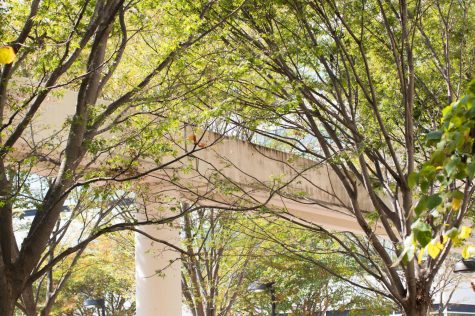
(Elena Harris)
In 2003, the Federal Railway Administration provided $2 million to ODU to continue the research left by AMT. Once these funds were depleted, ODU decided to release AMT from their contractual obligation to remove the elevated structure.
Initially, Morris intended to build the project at Virginia Tech instead of ODU. After discussions, Morris felt that the maglev train would be “an engineering toy” at Virginia Tech and he looked elsewhere. Morris then connected with Dominion Power in an attempt to create a magnetic rail line connecting venues in Virginia Beach. This too was scrapped due to the length required to connect these venues. Finally, Morris landed at ODU, where the space was “just right.” After failing to produce results at ODU, the Virginian-Pilot reported in 2007 that Morris was attempting to land contracts in Pakistan.
Morris’ quixotic obsession with this magnetic technology appears to have him throwing darts at a map and hoping one will land. In 2004, the Suffolk News-Herald reported that the technology “may be ready for baby steps, but is not even close to commercial application.” Morris’ attempts to make this technology a success and his promises of delivering a cost effective monorail have gone as far as his flagship car on its maiden voyage – a voyage that skidded and bumped only 45 feet along the track.
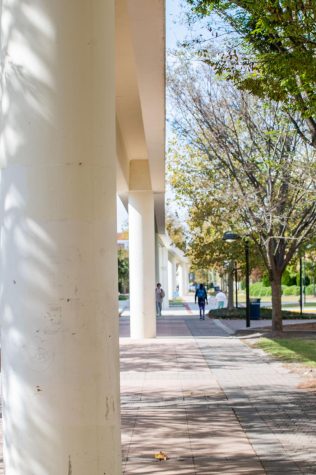
The car built by Morris was last seen at his facility outside of Atlanta, GA. It was here Morris claimed to have accomplished speeds of 60 miles per hour. This new accomplishment was not picked up by any interested parties or by ODU. When the Atlanta Journal-Constitution asked Morris about his newest experiment in 2007, he said he was trying to keep it “under wraps.”
ODU credulously bought into Morris’ promises and allowed the building of his experiment to go forward; despite the fact that Morris’ technology has not seen cost effective commercial success inside the United States. ODU is now left with a long concrete scar through campus that will require additional funds to demolish.
Chuck Thomas, an ODU staff photographer who was on campus during the installation, said that one art professor pitched the idea to use the elevated platform as a giant clock. The clock would roll from one end of campus to the other in 12 hour increments. Students could look to the structure and know the time while traversing campus. This idea was not implemented since ODU still sees views the track as a research tool.
In the near future, ODU is set to build a new Biology building near the existing elevated structure. President Hemphill said that “sections will be removed to make way for this new building,” adding that more sections may be demolished beyond the footprint of the new building. Hemphill said he did like the portion that crosses Hampton Blvd., since it makes a gateway to the university. A gateway made from the ruins of a failed experiment juxtaposed against a new R-1 rating for the university is oddly foreboding.

Will Witt is an English major with a concentration in journalism and Applied Mathematics, a junior, and graduating December of 2023. When he's not writing...

Elena Harris is a speech pathology major and photography minor graduating in the spring of 2023. Outside of the Mace and Crown, Elena enjoys the ODU experience...





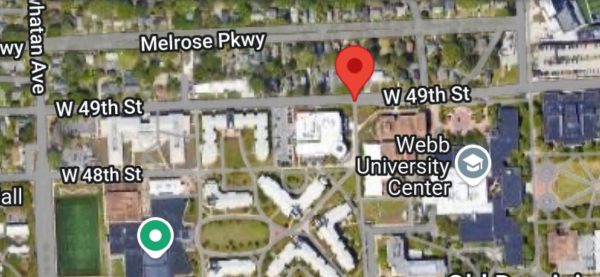
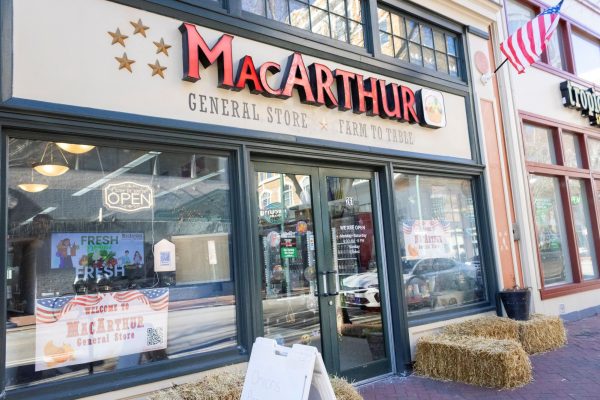



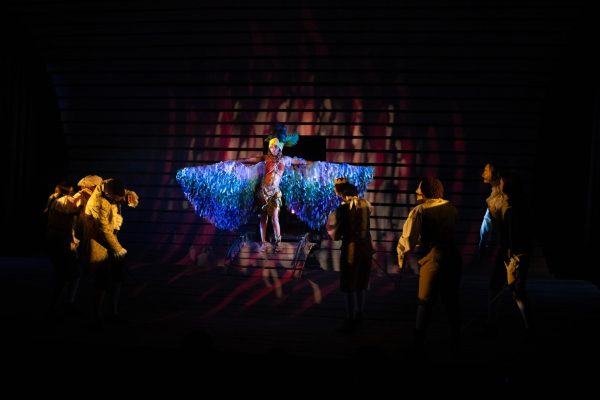
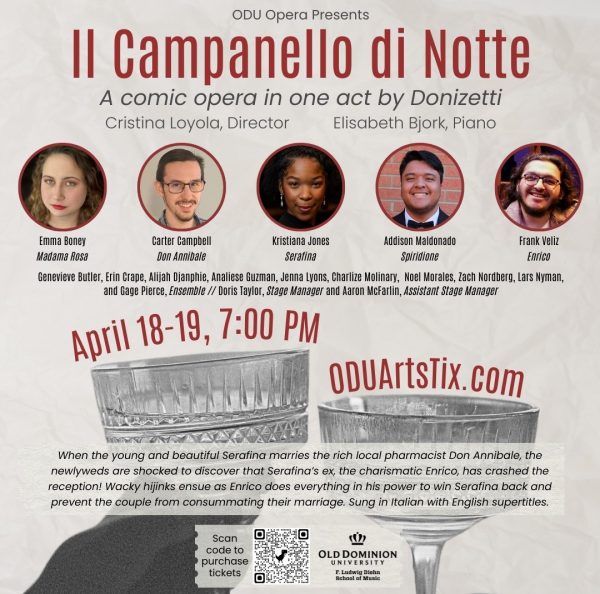
Aqua • Mar 1, 2024 at 7:05 pm
I’m confused as to why they didn’t convert it into a normal monorail? It seems like such a waste of money ya know; and it’s not like monorails didn’t already exist because they do lol, Disney had them. And it says they even got the trains from Florida.
Amadeo Villanueva • Mar 14, 2023 at 1:06 pm
I remember when I was a student working in the computer lab at the engineering department building, I was researching bullet trains and maglev trains in Japan on the internet. I was interested in the electrical technology behind it. Not too long after I heard ODU was going to build a meg lev the first in the United States. I wanted to major in Electrical engineering and I was happy that I could graduate at the completion of the Meg lev. Well , I was kicked out of ODU falsely accused by students of acting in drunken disorderly behavior, threatening student and faculty members. So I’m happy to say that the maglev was never completed. Maybe they were waiting for me to graduate and be part of the first Meg lev in the United States. Miami has a good fully autonomous monorail system.
Justice M. • Nov 16, 2022 at 12:30 pm
This piece is fantastic.